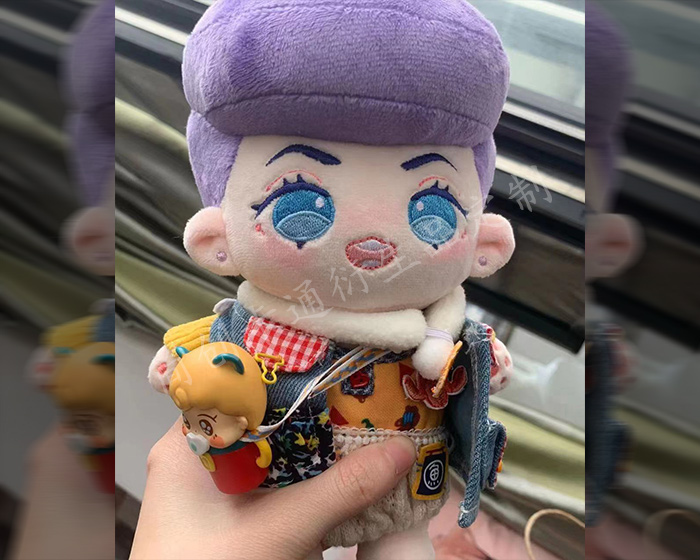Cleaning a 30-year-old stuffed animal can be a delicate process, especially considering its sentimental value and potential fragility. Over the years, plush toys can accumulate dirt, dust, and odors, but proper care is essential to avoid damaging them. Here’s a comprehensive guide on how to clean these treasured items while preserving their integrity.
1. Assess the Condition
Before starting the cleaning process, take a close look at the stuffed animal’s condition. Check for any signs of wear and tear, such as frayed seams, loose stuffing, or fading fabric. If the toy has delicate features, such as glued-on eyes or accessories, be especially cautious. Document any existing damage to understand what might worsen during cleaning.
2. Spot Cleaning First
For old stuffed animals, spot cleaning is often the safest approach. This method allows you to clean specific areas without subjecting the entire toy to washing. Here’s how to do it:
-
Gather Supplies: You will need a mild detergent, a soft cloth or sponge, and water. Make sure to use a detergent that is gentle and safe for fabrics.
-
Prepare a Cleaning Solution: Mix a small amount of detergent with water. Avoid excessive suds, as this can make rinsing difficult.
-
Test a Small Area: Before applying the solution to the entire toy, test it on a hidden spot to ensure it won’t cause discoloration or damage.
-
Dab Gently: Using the cloth or sponge, gently dab the stained areas. Avoid scrubbing, as this can fray the fabric or push dirt deeper into the stuffing.
3. Hand Washing When Necessary
If the stuffed animal is heavily soiled and can withstand more extensive cleaning, consider hand washing:
-
Fill a Basin: Use lukewarm water in a basin or bathtub. Add a mild detergent and mix gently to create suds.
-
Submerge the Toy: Place the stuffed animal in the water and gently agitate it. Avoid wringing or twisting the toy, as this can distort its shape.
-
Rinse Thoroughly: After cleaning, rinse the toy thoroughly with clean water to remove all soap. This step is crucial, as leftover detergent can cause skin irritation.
4. Drying the Stuffed Animal
Proper drying is essential to prevent mold and maintain the toy’s shape:
-
Air Dry: Lay the stuffed animal flat on a clean, dry towel in a well-ventilated area, away from direct sunlight, which can fade colors.
-
Use a Fan: If possible, position a fan nearby to increase airflow and speed up the drying process.
-
Avoid the Dryer: Unless the care label explicitly allows it, avoid using a dryer, as the heat can damage old materials and embellishments.
5. Refluffing and Repairing
After cleaning and drying, the stuffed animal may need some maintenance:
-
Refluff: Gently shake and fluff the toy by hand to restore its shape. You can also use a soft brush to revive its texture, especially for plush fabrics.
-
Sew Up Loose Seams: If you noticed any frayed seams or loose stuffing during the assessment, take the time to sew them up to prevent further damage.
6. Regular Maintenance
To keep a 30-year-old stuffed animal in good condition, regular maintenance is key. Lightly vacuum the toy using an upholstery attachment to remove dust, and consider occasional spot cleaning as needed.
Conclusion
Cleaning a 30-year-old stuffed animal requires careful attention and gentle techniques to preserve its character and integrity. By following these steps—assessing the condition, spot cleaning, hand washing when necessary, properly drying, and performing maintenance—you can help ensure that your cherished plush companion remains a comforting presence for years to come. With the right care, these toys can continue to evoke fond memories while looking their best.
The following are some examples of plush toys that our factory customizes for customers. Check out if there is one that you like best.
-
Custom Animal Plush
-
Cute Plush Doll
-
Custom Stuffed Animals
-
Plush Toy
-
Plush Dolls
-
Custom Stuffed Dolls
-
Custom Plush Toy
-
Cotton Dolls
-
Weighted Plush Toys
-
Cute Stuffed Animals
-
Custom Pet Stuffed Animal
-
Warmies Stuffed Animals
-
Weighted Stuffed Animal
-
Soft Toys
-
Plush Stuffed Doll
-
Custom Stuffed Dolls
-
Plush Maker
-
Bear Stuffed Toy
-
Anime Plush
-
Custom Stuffed Animal
-
Anime Plush
-
Custom Plush Toy
-
Personalised Stuffed Animal
-
Plush Animal Toys
-
Custom Plush Makers
-
Custom Plushies
-
Toy Manufacturer
-
Rag Doll Making
-
Custom Toys
-
Dog Plush Toys
-
Custom Rag Doll
-
Stuffed Animals
-
Custom Plush
-
Custom Plush Dolls
-
20cm Cotton Doll
-
Jojo Plush
-
Custom Doll
-
Jojo Doll
-
Large Plush Toys
-
15cm Cotton Doll
-
Dumpling Plush
-
Cotton Doll


























